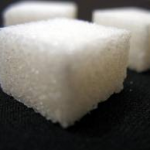Problems associated with higher-than-desired sugar levels are myriad. Most stem from the central problem of excess glucose flooding into blood vessel cells.
Everyone with glucose-handling difficulties is at increased risk of developing life-threathening conditions ranging from heart disease and stroke to blindness, nerve damage, depression, and kidney disease. These dire complications are the result of hyperglycemia (excess glucose in the bloodstream). There is now evidence that those with high “normal” fasting glucose levels suffer a greater incidence of disorders that are associated with diabetic conditions.
An increasing number of scientific studies reveal that sugar toxicity is a causative factor in a host of degenerative diseases and premature aging. One only has to look at the multiple diseases suffered by diabetes to appreciate the lethal effects of protein glycation and carbonylation, major complications related to excess sugar (glucose) levels. Non-diabetes also encourter destructive protein-damaging glycation and carbonylation processes, albeit at a lower rate than diabetes.
Taking steps to guard against glycation would appear to be a mandatory part of a health maintenance program.
Avoid food cooked at high temperatures to reduce the formation of AGEs (Advanced Glycation Ends) in the body.
[AGEs are the end-products of glycation reactions, in which a sugar molecule bonds to either a protein or lipid molecule without an enzyme to control the reaction].
In pre-diabetes, a patient’s blood glucose levels are abnormally evalated, but often not enough to warrant diagnosis of type II diabetes early on. Most pre-diabetic patients experience few if any symptoms, and thus have no idea that they are at risk of developing diabetes. That is why it is so important to guard against sugar toxicity before a diabetic state manifests. See the symptoms below.
There are good sugars and bad sugars.
Bad sugars, often referred to as simple sugars, are those in foods that do not offer any other nutritional benefit. Examples of simple sugars include foods like soda, sweets, sugar cereals, juice drinks, and refined grains.
Good sugars, or complex carbohydrates, are present in foods that provide nutrients such as vitamins, minerals, protein, and fibre. Examples of complex carbohydrates include foods like fruit, vegetables, beans, and whole grains.
Careful monitoring of your weight and your food choices will help you prevent diabetes.
Focus on lean proteins at each meal, and restrict your sugar and starch intake. You also need to choose fibre-rich whole grains to release glucose in a steady stream to moderate blood sugar levels. Good food choices include:
- Dietary fibres
- Eggs
- Flaxseed oil
- Lamb
- Lean Beef
- Low-fat Cottage Cheese
- Nuts and Seeds (raw: almonds, sesame seeds, hazelnuts, cashews)
- Poultry
- Soy products
- Cold-water fish
- Veal
- Yoghut
An accurate measurement of underlying glucose impairment is the hemoglobin A1C blood test. But be on the look out for these symptoms:
- Blurred vision
- Excessive thirst
- Extreme hunger
- Increased urination
- Increased fatigue
- Irritability
- Numbness/tingling in fingers and toes
- Weakness or fatigue
- Weight gain.
The key to living a long life unemcumbered by disease is to identify aging parts of your body that may be experiencing decline before disease strikes and take action immediately to treat them. This can be accomplished by comprehensive annual check-ups that include advanced screening methods and thorough blood testing.
By taking action early, utilizing an integrative program of healthy diet, targeted nutrients, bioidentical hormones, and nutritional supplementation, you can ensure a bright healthy future free from silent diseases that rob aging adults of their helpful vigor.
Reference: Life Extension Special Edition Magazine






